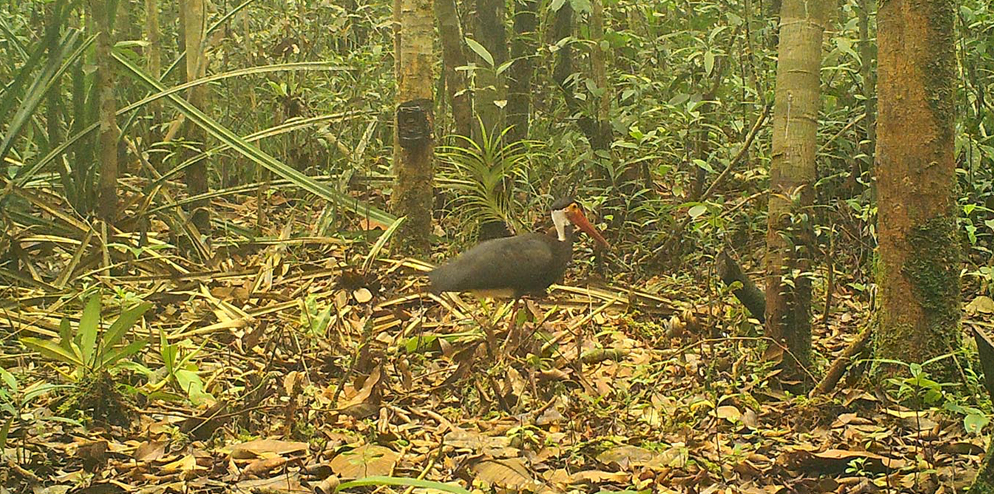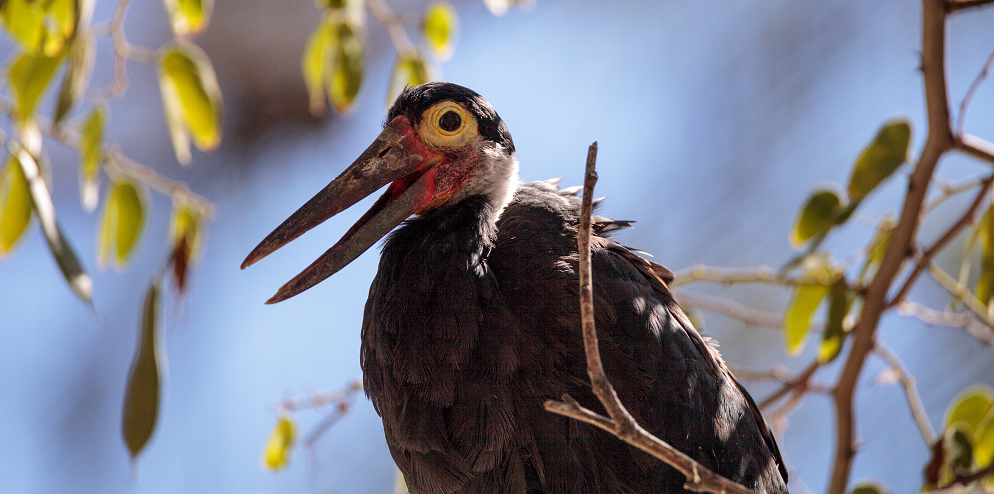September 14, 2018
Meet the Storm’s Stork (Ciconia Stormi), a bird which belongs to the Ciconiidae family. It is considered to be the rarest of all stork species.
The Storm’s Stork is native to Brunei Darussalam, Malaysia, Myanmar, Thailand, and Indonesia, where it is known by its Indonesian name Bangau Storm.
The Storm’s Stork is a black-and-white stork with a red bill. It has orange facial skin, with a yellow area around its eye. It is a medium-sized stork, standing 75cm to 91cm tall on slender, dull red legs.
The bird is generally solitary, but can be found in small groups occasionally. Adult storm’s storks are monogamous, forming a male-female bond which lasts many years. The storks often reuse the same nest over and over again, adding new sticks and mud to the nest each year.
The stork usually lays two eggs per year, with a month-long incubation period which both male and female birds take turns participating in.
Young storks are known to make loud frog-like begging calls when parents return with food to the nests. Chicks are typically capable of flying after 90 days.
The Storm’s Stork lives primarily in dense lowland tropical forests, particularly freshwater and peat swamp forests.

It is described as a secretive species, typically foraging stealthily with slow movements along muddy banks of rivers or creeks, keeping largely to shaded areas. The bird feeds primarily on small fish, frogs, and aquatic larvae insects. Unlike other storks, the Storm’s stork will also forage on forest paths away from water bodies in search of small ground dwelling vertebrates.
When surprised, the Storm’s Stork can quickly run, jump and fly, ascending almost vertically through a canopy opening.
Since 1994, the Storm’s Stork has held an Endangered (EN) conservation status issued by the International Union for Conservation of Nature (IUCN). EN species are species with a very high risk of extinction as a result of population declines of 50 to more than 70 per cent over the previous decade or three generations. The Storm’s Stork is currently protected under Indonesian law.

At present, the total population of Storm’s Storks is estimated to be only around 400 to 500 individuals, resulting primarily from deforestation due to logging, dam construction or land conversion (for oil palm plantations) activities.
The Restorasi Ekosistem Riau (RER) team has recorded the Storm’s Stork to be a resident species within the Kampar Peninsula, meaning it is a species that is present throughout the year, and breeds locally.
On the other hand, the bird has also been recorded as a species which is seldom seen in RER, although it has been captured foraging on the forest floor by a camera trap.
The Storm’s Stork is one of the 299 species of birds included in a bird checklist which was last year published by the RER.
Click here to download the full report.